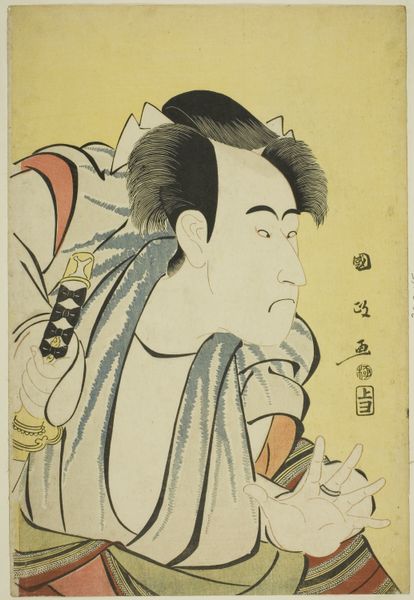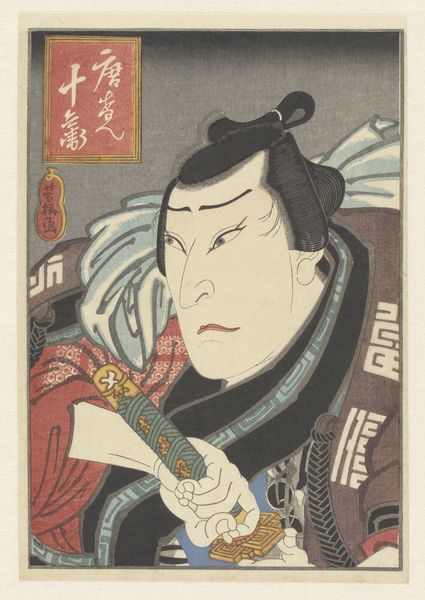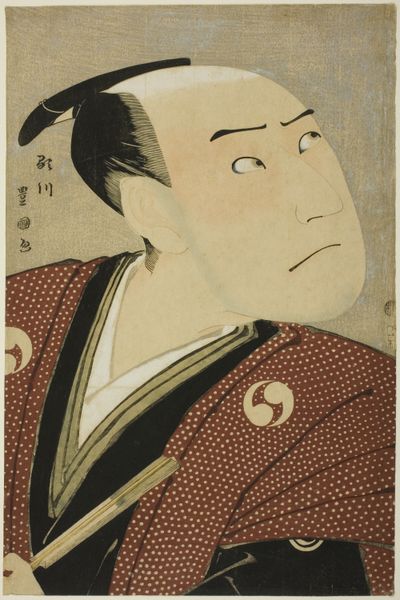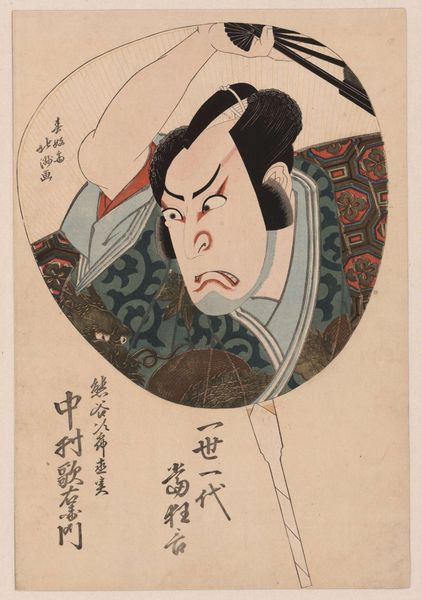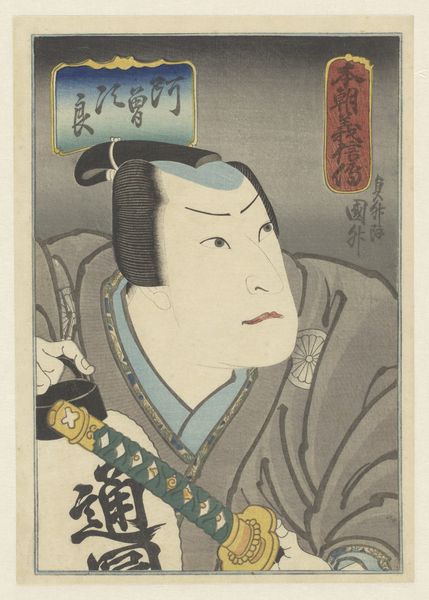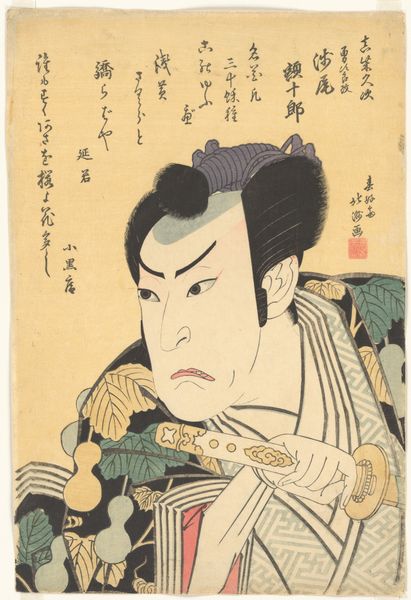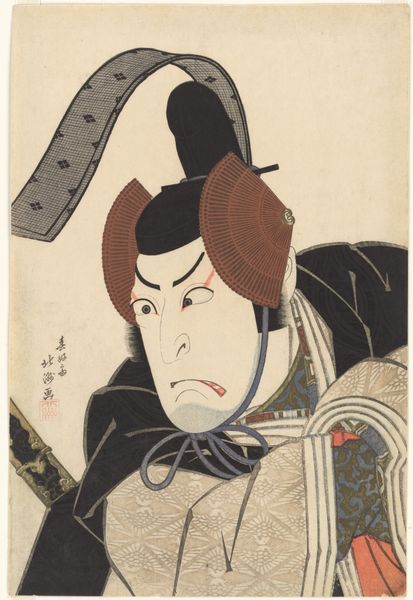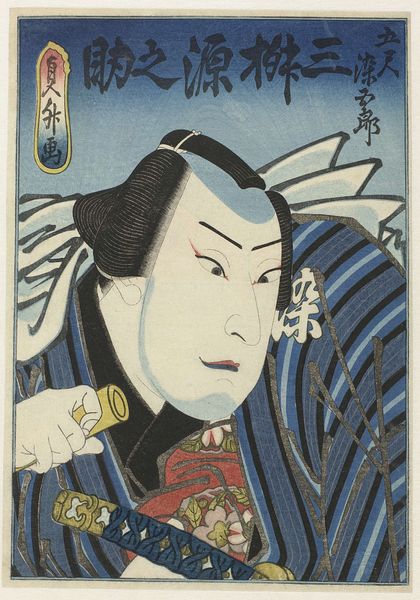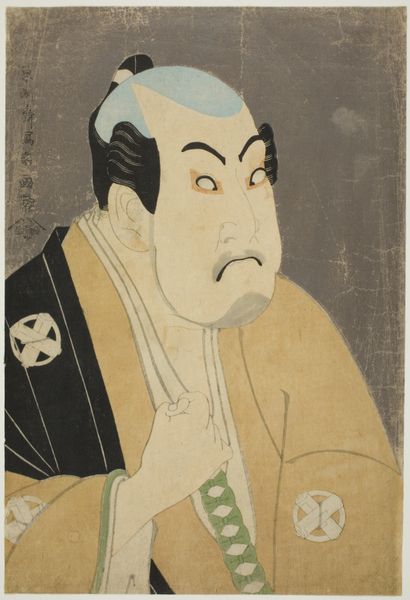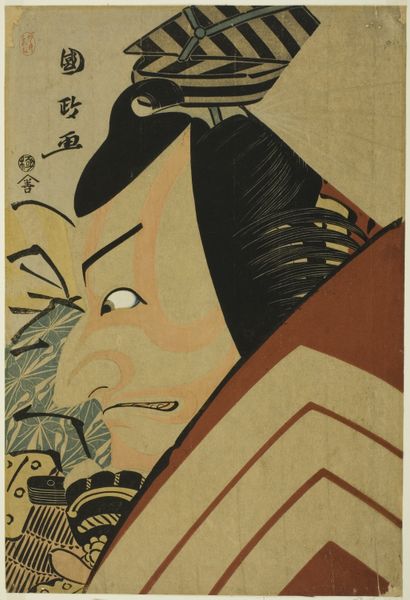
The actor Sawamura Sojuro lll as the lay priest Kiyomori c. 1795
0:00
0:00
#
portrait
# print
#
caricature
#
asian-art
#
caricature
#
ukiyo-e
Dimensions: 38.9 × 26.0 cm
Copyright: Public Domain
Editor: Here we have a print by Utagawa Kunimasa from around 1795, titled "The actor Sawamura Sojuro lll as the lay priest Kiyomori." It strikes me as rather unusual because of the simplified forms and the almost cartoonish exaggeration of the actor’s features. What do you see in this piece, considered from a historical context? Curator: It’s a fascinating example of ukiyo-e and its role in popular culture. These actor prints, particularly those exaggerating features, weren't just decorative. They served as advertisements, celebrity endorsements, and even a form of political commentary. Consider the rigid class structures of the Edo period – the Kabuki theatre provided a space where social hierarchies were temporarily suspended, and actors could become larger-than-life figures, critiquing those in power, don’t you think? Editor: That's really insightful. So, the exaggeration isn't just stylistic, it's a form of social commentary? Like a caricature with purpose? Curator: Precisely. The government certainly watched Kabuki closely, censoring plays that were considered too subversive. Think about the figure in the print as well. Representing him in a semi-comedic fashion served a socio-political purpose of gentle mockery and as a cathartic experience for the masses. Editor: I never would have considered the aspect of societal impact, it makes so much sense though. I'm definitely looking at it differently now. Curator: Indeed. Remember that art often plays a role far beyond simple aesthetics; understanding this makes history much richer. Editor: It was fun to get insight on this, I’ll remember the value of seeing art as not existing in a bubble.
Comments
No comments
Be the first to comment and join the conversation on the ultimate creative platform.
